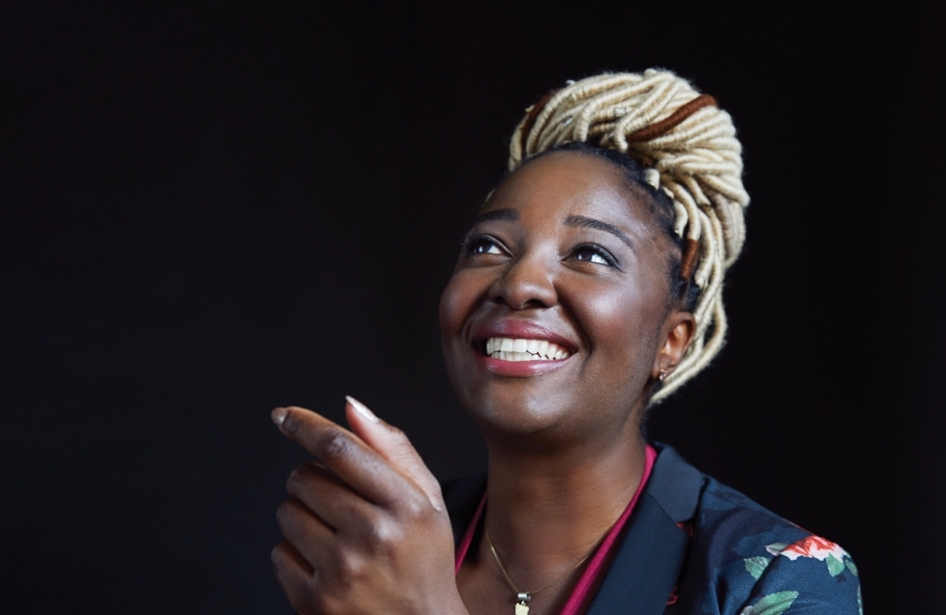Age: 34
Job Title: President, Ribbon Rouge Foundation
Why She’s Top 40: She uses her creativity – and the creativity of others – to educate and engage the community around social issues related to HIV
Growing up in Nigeria, Morenike Olaosebikan heard from her physician father how HIV was ravaging her country. After contracting tuberculosis as a young adult, she spent time in a health-care facility and saw first-hand the effects of the disease. A few years later, as an international student in the Faculty of Pharmacy at the University of Alberta, she was determined to raise money to send back to those struggling at home. But that goal was eclipsed by the (since revoked) rule that international students couldn’t work on campus.
The solution? She created Ribbon Rouge, an art event full of singing, modelling and music performed by international students like herself.
“It was an amateur, nonsense show with people goofing around on stage,” laughs Olaosebikan, who raised $2,816.19 for HIV treatment that first Ribbon Rouge in 2006. She felt good about sending money to African countries for HIV treatment. Right around that time, she also got a job as a research assistant, which involved learning about HIV in Edmonton, broadening her understanding of the disease. “I started learning about how populations are more disproportionately affected [by HIV] and that … it’s something people come to from some very unfair systemic and structural issues,” she says.
As her knowledge evolved, so did Ribbon Rouge. “It starts shifting to: let’s find a way to actually engage and educate and let’s use the arts to do that,” says Olaosebikan. Nowadays, she runs her own pharmacy, holds tobacco cessation programs, mentors international pharmacy students and volunteers on the boards of many organizations. She also continues to operate Ribbon Rouge, which now mentors art students from across the province as they create art pieces inspired by interactions with women who are not only affected by HIV but by the social injustices involved with the disease.
“I think artists create culture. And so, if we have enough artists that are activated that way, what happens to culture?” she asks. “It’s not something I can measure right now, but it’s something I feel really fulfilled watching happen.”
